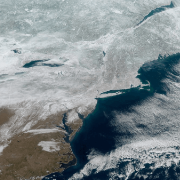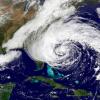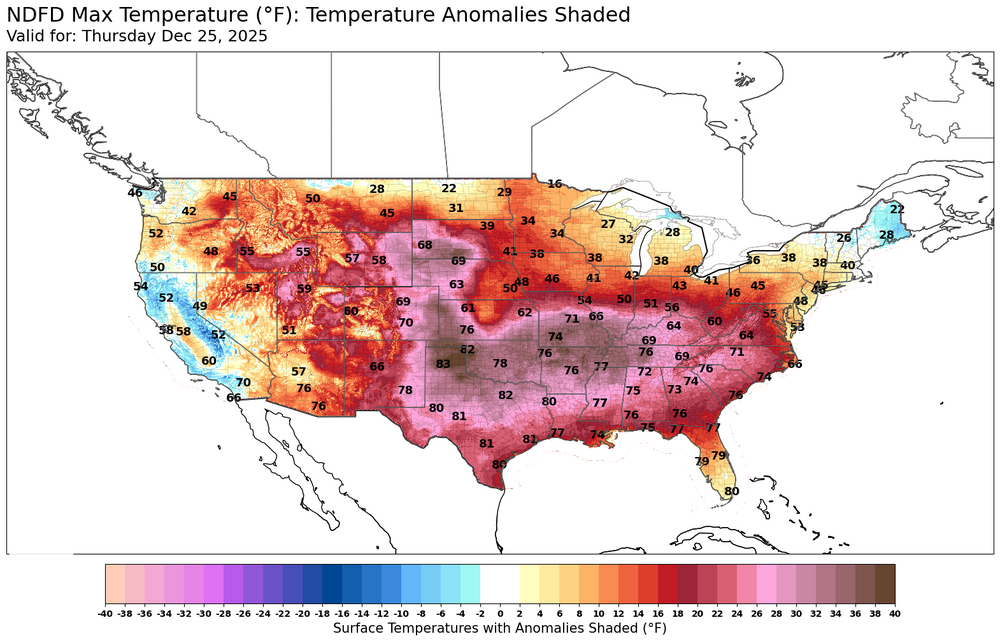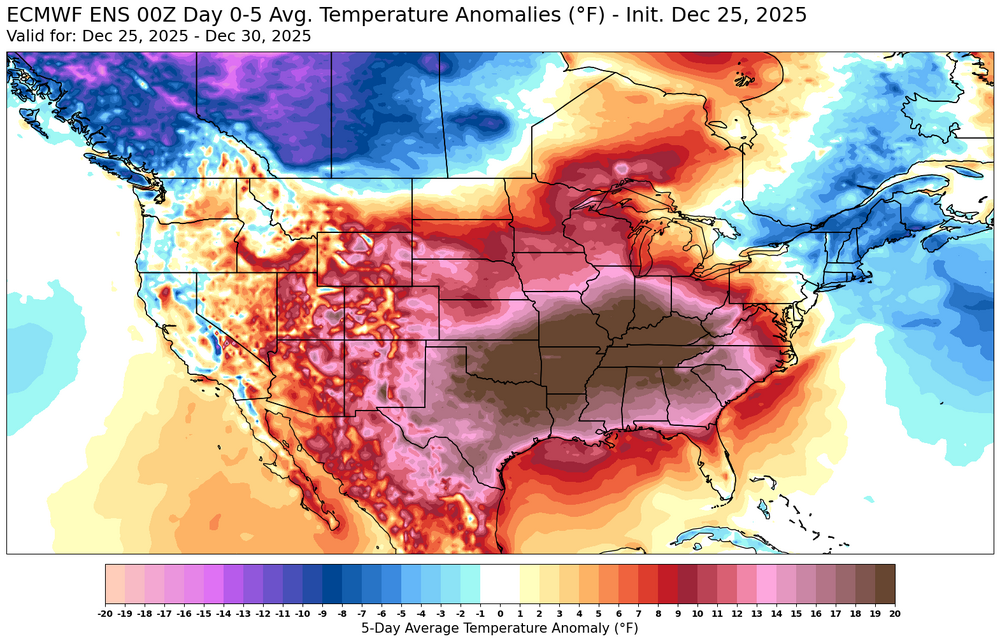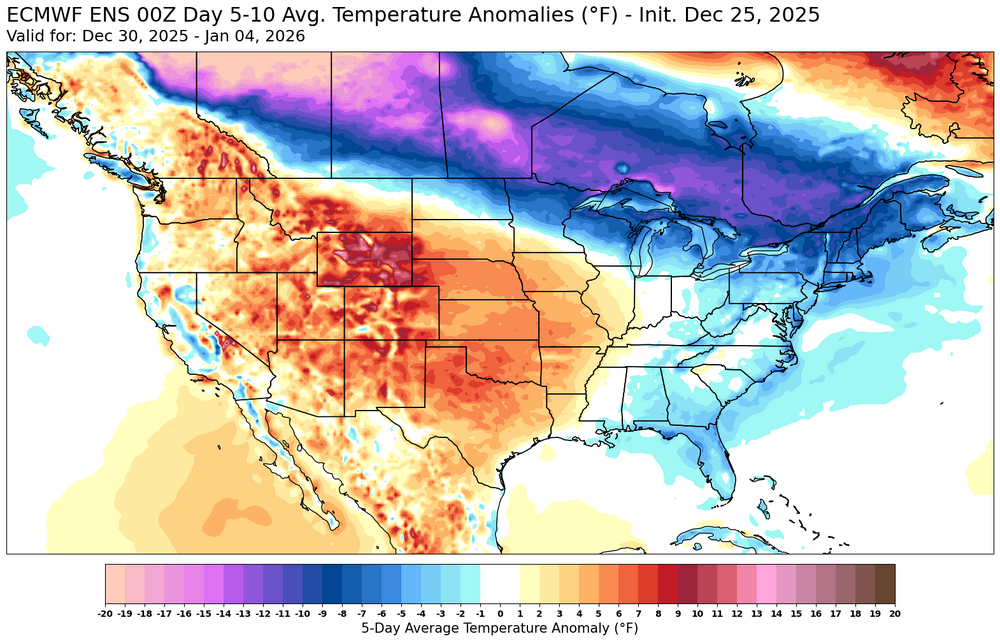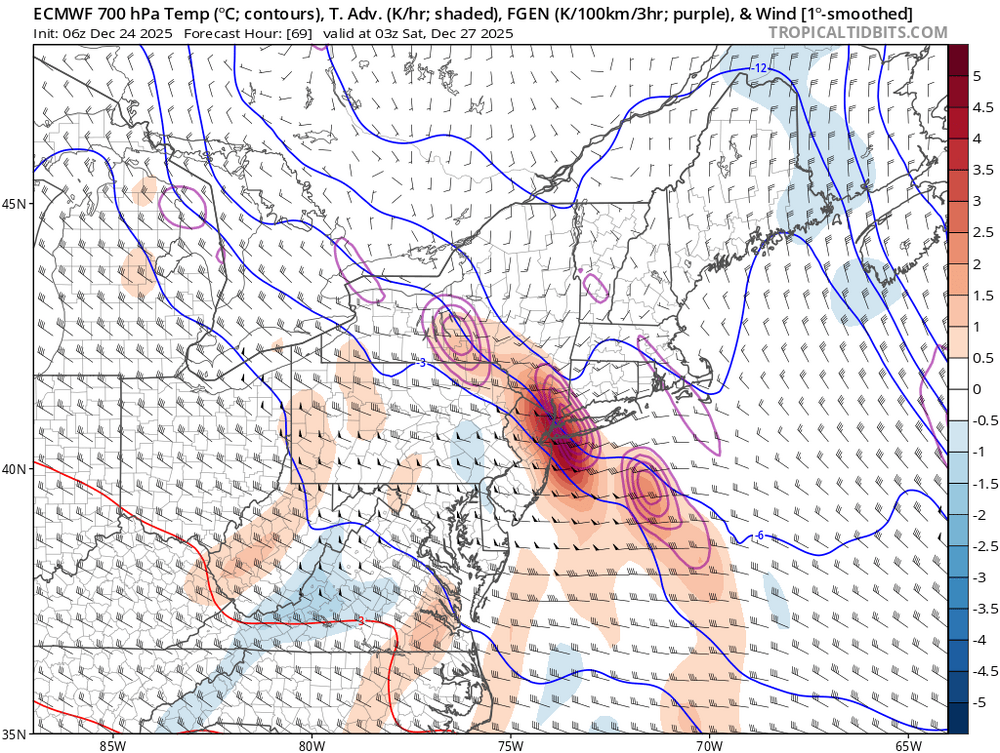-
Posts
36,055 -
Joined
-
Last visited
About bluewave

Profile Information
-
Gender
Male
-
Location:
KHVN
Recent Profile Visitors
57,867 profile views
-
This special was really well done. Nice to see uplifting content out there. Ed seems like a really kind guy who was able to bring out the best in New Yorkers. All the best wishes to everyone on here during this holiday season.
-
Maybe the models easing up a bit on the TPV press early Jan from previous runs may allow the Southern Stream to come more into play with the +TNH and continuing -NAO.
-
-
I think the last time Orange County had widespread 20”+ was back in December 2002. Monthly Data for December 2002 for Orange County, NY Click column heading to sort ascending, click again to sort descending. GARDNERVILLE COOP 20.1 PORT JERVIS COOP 34.0 WALDEN 1 ESE COOP 22.5 WEST POINT COOP 30.5
-
Models not quite as cold for the end of December and the start of January as prior runs with the core of the cold now forecast to stay to our north.
-
-
This season is going to be an interesting case study for snowy La Niña Decembers across the NYC Metro region and the rest of the season. With the storm coming in next few days, December 2025 will rank in our snowier La Niña December list of years. Most of the time these seasons got to 25”+ from Newark out to Islip. But the way we are getting this snowy December is different from the past La Niña cases. Unusually early stratospheric disruption with the record low sea ice in the Kara and Barents. The forecast is calling for a reversal of this pattern in the stratosphere after the first week of January. So it will be interesting to see if we follow up later in the season with more snow getting us over the 25” mark from Newark out to Islip. My guess is that we would probably need at least one NESIS KU event with a rapidly deepening low near the benchmark to pull this off. Since we haven’t reached 25”+ without at least one KU NESIS storm in the last 30 years. But this storm track has been inactive since January 2022 with all our snow this December coming with an unusually snowy clipper snowfall pattern that we haven’t seen in many years. The overall 500 mb pattern leading to this is quite unique for December. It doesn’t match previous Decembers. So with all the unusual influences this month, it’s difficult to say for sure we will repeat the past winter snowfall outcomes following snowy La Niña Decembers. But we can say for sure that December 2025 will go into the books as one of the our coldest and snowiest in a long time regardless of what happens after the first week of January.
-
The Euro is showing this coming in as a wall of heavy snow scenario where the best spots for banding can pick up 3-6” of snow in 3-4 hours with excellent rates.
-
The ensemble mean forecasts always kept the warmest to our SW which isn’t a surprise. But the 26th through the end of the month will verify several degrees colder. The warm up during the 17th to the 25th did beat expectations on the warmest few days which has been a common occurrence since 2011 and even prior to that. The -NAO is actually linking up with the Southeast Ridge this weekend which wasn’t originally forecast. You can see how much the models changed for Saturday from the earlier runs. But the cold high over New England is leading to a colder and snowier solution for a change. The last few years when this happened featured warmer storm tracks due to the lack of a cold high over New England. New run more -NAO linkage with Southeast ridge for rare favorable solution Old run Southeast ridge and -NAO separate
-
If it wasn’t for the strong -NAO, then record ridge across the Southern Plains would have expanded closer to our area.
-
Same with the GEFS and GEPS. I posted this in the main ENSO thread. In order to get really cold these days we need some kind of record warmth in the Arctic. If we can just get the storm track to shift south to a benchmark position in January, then maybe this can be our bounce back snowfall year which we have been hoping for.
-
They do a pretty good job and also stream on YouTube if not included in some cable packages. The various weather channels going to other programming reminds me of MTV getting away from their core music video business and going to mostly reality shows.
-
This is the first time in a while that the 11-15 day ensembles have had this much of a warm bias in the East. https://frontierweather.dtn.com/verification.html





